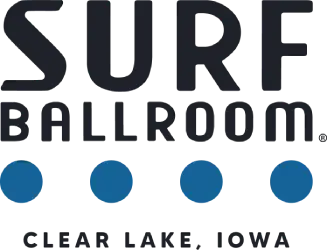Surf Ballroom History/Timeline
Take a walk through time and discover the incredible story of the Surf Ballroom — from its early beginnings to its role in shaping American music history.


The Legendary Story of the Surf Ballroom
To many, the Surf Ballroom is both an American cultural icon and an important historical landmark. The original Surf Ballroom was located across the street from its current site on the shores of Clear Lake. It officially opened for business on April 17, 1933, with a $1.00 dance held on a 90×120-foot hardwood dance floor. The venue also featured a rooftop garden for outdoor dancing, five lakeside windows, and a boardwalk leading to nearby docks.
The Surf was one of three ventures developed by Carl J. Fox, along with two sister ballrooms—The Terp in Austin, Minnesota (built in 1938), and The Prom in St. Paul, Minnesota (built in 1941). It’s been said that Fox borrowed against his life insurance to fund the project. He sold all three ballrooms in December 1946 to Prom, Inc. of Chicago for a reported total of $1,300,000.
Tragedy struck in the early morning hours of April 20, 1947, when a fire destroyed the original building. Plans for a replacement were quickly set in motion, and the new Surf Ballroom was constructed across the street, on what had been the original venue’s parking lot. The rebuilt Surf officially reopened on July 1, 1948. The project cost approximately $350,000.
The name and tropical motif of the Surf Ballroom were inspired by the original owner’s desire to recreate the ambiance of an ocean beach club. Hand-painted murals on the back walls depicted pounding surf, swaying palm trees, sailboats, and lighthouses. Furnishings were made of bamboo and rattan, enhancing the South Sea Island theme. Palm trees surround the stage, and cloud projections overhead give the illusion of dancing under the stars.
Originally, the ballroom operated from Wednesday through Sunday each week. Fridays featured “Old Style Music and Dancing,” while the remaining nights were reserved for “Modern Music and Dancing.” In the 1930s and ’40s, a big band couldn’t build a national reputation without playing the Surf. Legendary acts like Count Basie, Duke Ellington, and The Dorsey Brothers were regulars. At the time, ballrooms were the epicenter of entertainment—dancing was the main attraction.
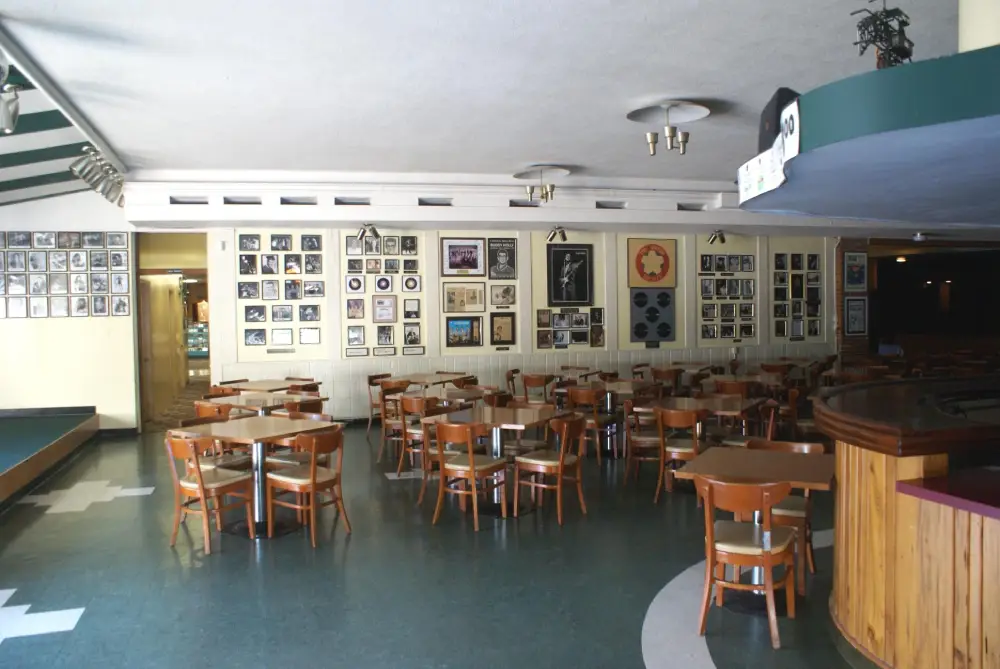

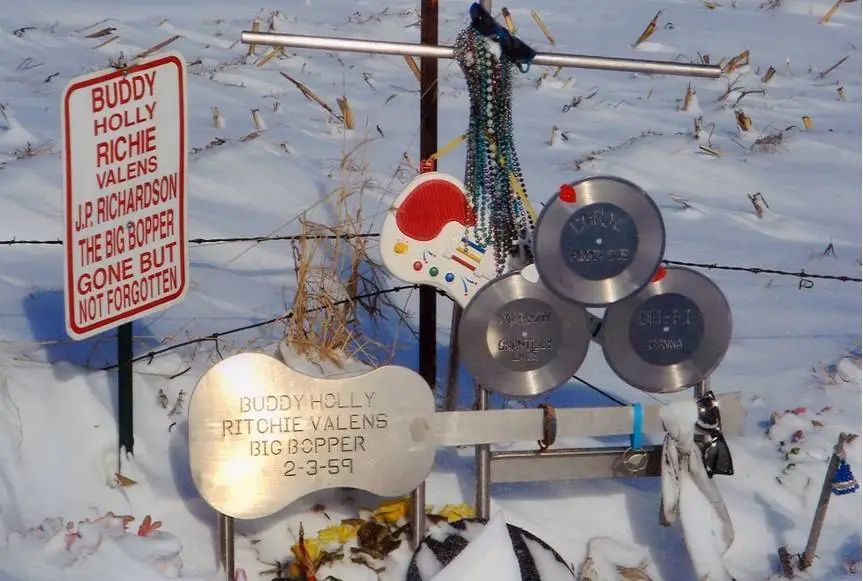

The 1950s ushered in the era of rock and roll, and then-manager Carroll Anderson was quick to book the biggest names in the business. Artists like The Everly Brothers, Roy Orbison, Ricky Nelson, Little Richard, Jan and Dean, and Conway Twitty all graced the Surf’s stage. It became one of the first ballrooms in the state to regularly feature rock ’n’ roll acts, earning its reputation as a must-play venue.
This legacy was forever cemented on February 2, 1959, when the Surf hosted the now-legendary Winter Dance Party featuring Buddy Holly, Ritchie Valens, J.P. “The Big Bopper” Richardson, Dion & The Belmonts, and Frankie Sardo. This fateful concert left the most lasting mark on the venue’s history.
From the 1970s to today, the Surf has continued to welcome a wide range of iconic performers—including Santana, REO Speedwagon, Kansas, Alice Cooper, The Doobie Brothers, B.B. King, ZZ Top, Martina McBride, Lynyrd Skynyrd, Robert Plant, and many more—keeping its legacy alive as a cornerstone of American music history.
Recent Changes
January 27, 2009
September 6, 2011
January 13, 2021
2022 - 2025
Secured over $4.7 million in public investment through the Destination Iowa and Community Attraction and Tourism (CAT) grants to support the development of the Surf District Music Enrichment and Immersive Center, new performance and education spaces, and major infrastructure improvements around Buddy Holly Place.
Timeline

The Original Surf Ballroom was built
17 April 1933
The Original Surf Ballroom was built by Carl J. Fox across the street from its current location on the shores of Clear Lake. The venue featured a 90×120-foot hardwood dance floor and a roof garden for dancing outdoors. Throughout the 30s and 40’s the original Surf was a “must stop” venue for Big Bands seeking to gain National attention, performers such as Count Basie, Duke Ellington and Dorsey Brothers.
Carl Fox sold the Surf and two sister ballrooms
1946
Carl Fox sold the Surf and two sister ballrooms, The Terp & The Prom to Prom, Inc. of Chicago for $1,300,000.

Fire
20 April 1947
Fire destroyed the Original Surf Ballroom. Plans for its replacement were quickly underway.
Reopened
1 July 1948
The current Surf Ballroom reopened across the street from its original location. The cost to rebuild was an estimated $350,000.
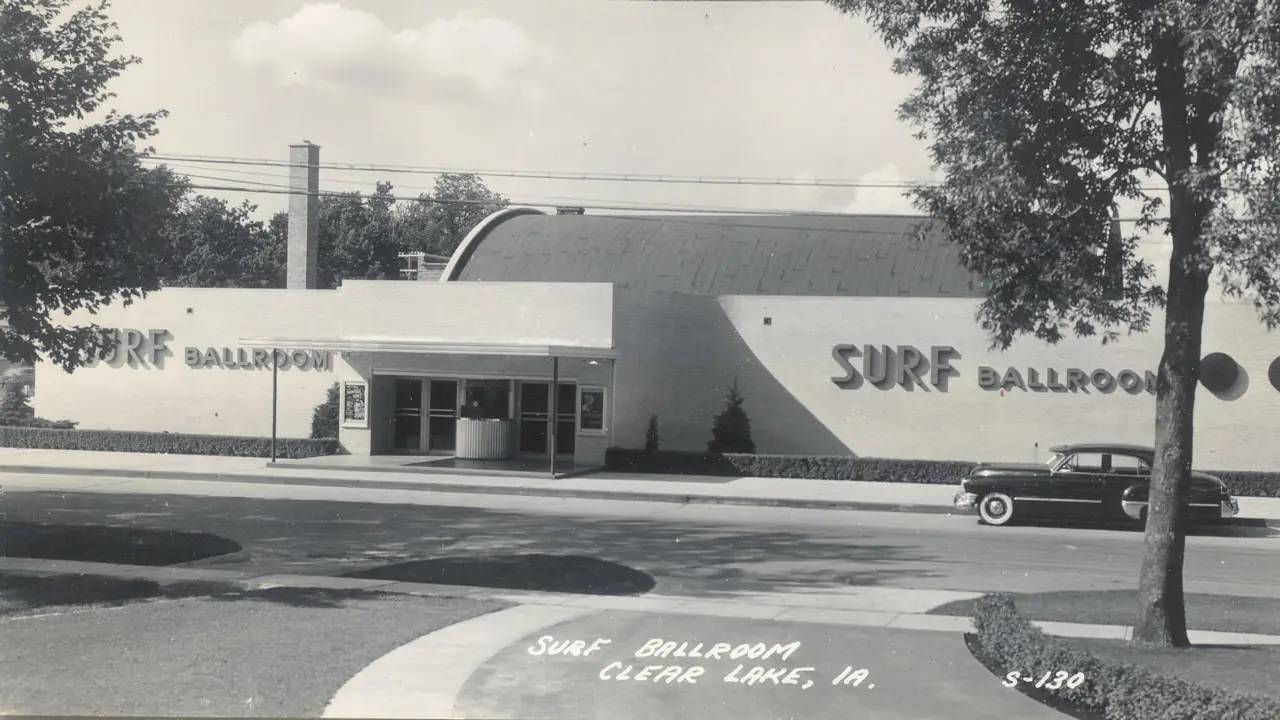
The new Surf Ballroom
1950
The new Surf Ballroom carried on the tradition by bringing in big-name entertainers and becoming a “must-play” venue on the Big Band circuit. By the mid-1950s, change was in the air, and the Surf responded to the tastes of its younger audience by shifting its format from Big Bands to contemporary performers. Rock and Roll had arrived at the Surf.

Winter Dance Party Tour
2 February 1959
The original ‘Winter Dance Party Tour’ made its final stop at the Surf Ballroom. Buddy Holly, Ritchie Valens, J.P. “The Big Bopper” Richardson, Dion & The Belmonts, and Frankie Sardo performed before an estimated 1,100 enthusiastic fans. Unfortunately, the plane carrying the trio and their pilot, Roger Peterson, crashed early the next morning. The tragic deaths of the three stars are often referred to as ‘The Day The Music Died.’
Surf was purchased
1960
C.C. Mitchell and Co. of Chicago purchased the Surf.
Major Remodeling
1961
A major remodeling project transformed the Surf’s interior from its original beach club motif to a theme representing the four seasons. The original murals were covered with new scenes depicting Winter, Spring, Summer, and Fall. (The original murals were uncovered again in 1994.)
Surf was sold
1963
The Surf was sold to two Clear Lake businessmen, Ray Seney and Richard Casey.

Cypress Room
1964
Some alterations were made to the building during this period, including the addition of an outside patio onto the south side, just outside of the “Cypress Room” (now the Surf’s Lounge). The marquee over the entrance awning was also likely added at this time.
Surf ownership changed hands
1968
The Surf was sold to Bill Eaton of Clear Lake and his brother, Kenneth Eaton, of Chicago.
Surf was sold
1974
Mark Arneson, James Connell, Robert Halford, and Louis Schuler purchased the Surf.
Surf was sold
1979
The Mad Hatter organized and hosted the first First Winter Dance Party Tribute event.

Red Velvet Glamor Returned to the Stage
1991
The red velvet swag and stage curtains were restored to their original appearance.

Dean Snyder family of Clear Lake, purchased the Surf Ballroom
1994
The Surf Ballroom closed its doors briefly before being purchased and historically rehabilitated by the Dean Snyder family of Clear Lake. At the time of purchase, the venue was in a state of disrepair, with significant damage to the dance floor caused by roof leakage. Wallpaper was removed in the foyer to reveal the original pineapple stenciling, which was also restored. The original murals were uncovered, palm trees were returned to the stage area, the maple floor was sanded, resealed, and waxed, and a replica of the original carpet was installed.
Reopened
1995
The Surf reopened its doors just in time for the Winter Dance Party.
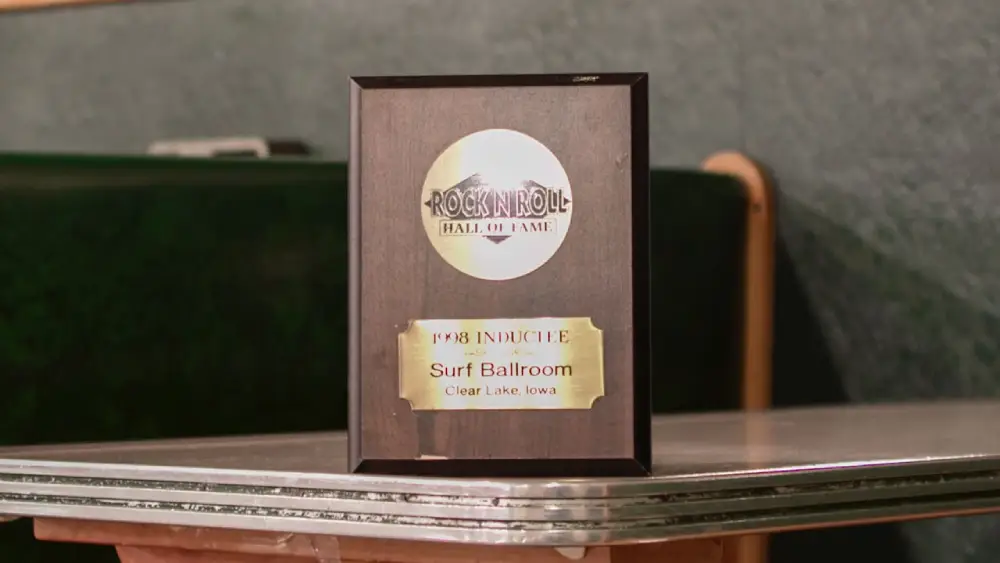
Hall of Fame Induction
1998
The Surf Ballroom was inducted into the Iowa Rock and Roll Hall of Fame.
501 (c) (3) Established to Operate the Surf
25 January 2008
The North Iowa Cultural Center and Museum takes over operations of the Surf Ballroom. The building is leased to the entity by the Dean Snyder Family (Surf Ltd.).
50 Winters Later
2009
The Surf Ballroom was dedicated by the Rock and Roll Hall of Fame as a historic rock and roll landmark as part of their ongoing Landmark Series, identifying locations in America significant to the origins of rock and roll. This honor was announced at a press conference during the Winter Dance Party – 50 Winters Later Celebration.

National Register of Historic Places
6 September 2011
The Surf Ballroom was officially listed on the National Register of Historic Places by the United States Department of the Interior.
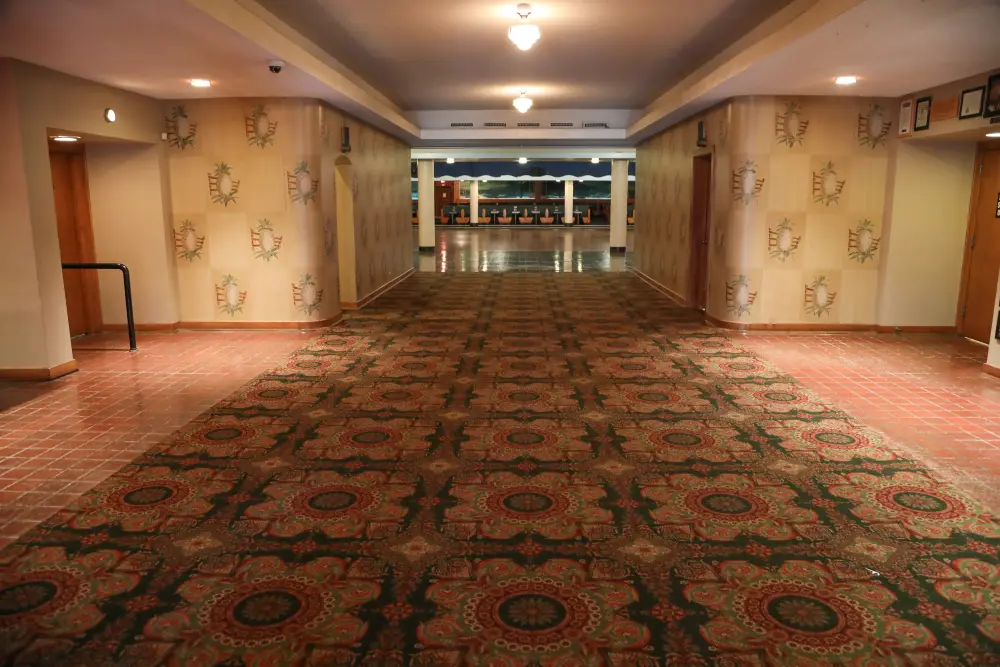
Lobby Updates
2016
New period carpet was installed in the Lobby, and hand-painted pineapple murals were historically recreated.
Roof Replacement
2019
The Surf’s roof underwent a complete replacement, including removal and replacement of the rubber roofing membrane that covers the dome.

Restroom Restoration
2020
After discovering a roll of the original wall covering in storage, the men’s and women’s restrooms were updated using an exact replica of the original wallpaper used in the spaces when the Surf was originally constructed in 1948.
National Historic Landmark
13 January 2021
The U.S Department of the Interior designated the Surf Ballroom as a National Historic Landmark, recognizing the Surf’s enduring role in the history of American music. The Surf Ballroom is Iowa’s 27th National Historic Landmark.
Surf Music Experience Center
September 2025
In September 2025, the new Music Experience Center building was opened — right next door to the Surf! The permanent exhibition includes never-before-seen artifacts and a multi-sensory immersive experience, Not Fade Away.
